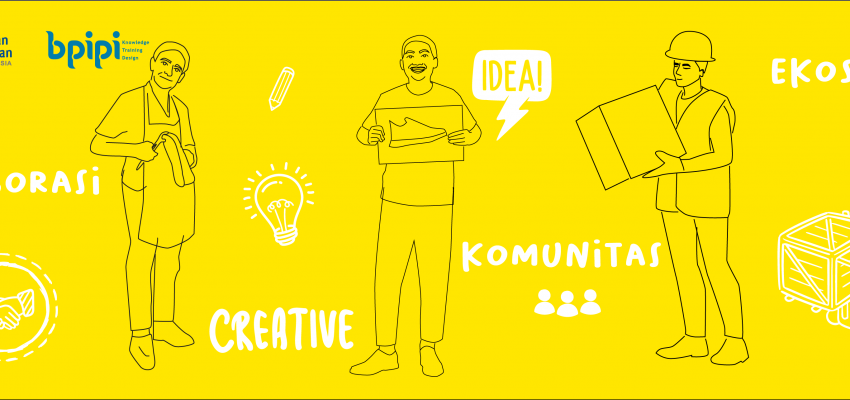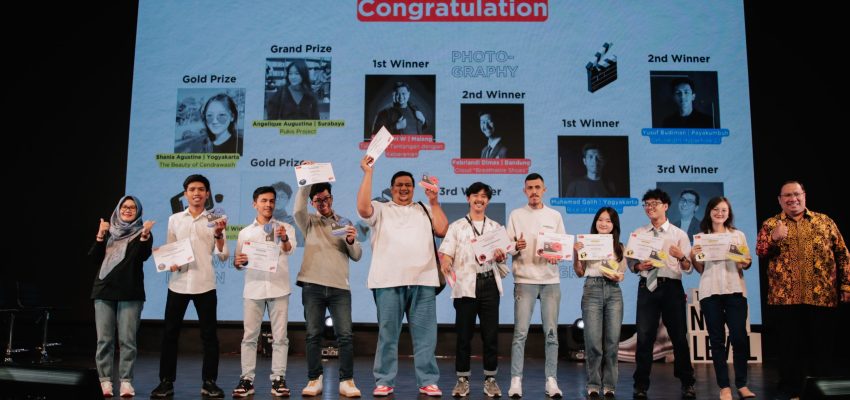Saat ini fenomena inovasi pelayanan publik menjadi perhatian penting dalam upaya reformasi birokrasi. Kebutuhan reformasi…

BPIPI among Ecosystems, Communities, and Collaboration
ALFIYAN DAROJAT
Staff Tata Usaha
BPIPI among Ecosystems, Communities, and Collaboration
Florida R. In his book entitled The Rise of Creative Class (2002), there are 3 (three) main points of creativity, (1) creativity is essential in the way of life and work now and forever, (2) human creativity is very diverse and multidimensional is not limited to technological innovation and business models, (3) continuous pressure between organization and creativity. According to Florida R (2002) Creative Class , the rise of the Creative Class is a reflection of an extensive and significant change in values, norms, and behavior. In the last five years, Creative Class has been transformed by the growth of local footwear brands as the identity of the birth of Generation Z.
Creative Class has 3 (three) fundamental values: individuality, meritocracy and diversityThis group likes hard work, challenge, and stimulus. Each community element tends to set goals and achievements and tolerate differences. Likewise, in choosing a workplace, people belonging to this creative community prioritize challenges and responsibilities, dynamic, flexibility, especially in terms of time and place, honor and involvement of business and society. Tend to be detached from working on a joint project and longer working time.
The domestic footwear industry, which is currently dominated by the influence of local brands, is a testament to the growth of the creative economy in the domestic market. The creative economy is an inevitable part of globalization. Industrialization has now created work patterns industrial and distribution systems that are oriented towards cheaper and more efficient. The phenomenon of the production system with the lowest possible cost as part of the effect of competence is increasingly focused on details. Today's large industrial countries can no longer rely on their supremacy and history in the manufacturing industry. Currently they have to rely more on human resources who are more creative, so that later in the 1990s, this phenomenon was better known as the new economic era that focuses on information and creativity, which is popularly called the Creative Economy which is driven by industrial sectors that are no longer focused on information and creativity. only on commodities but focus on added value and creativity.
This public space is called collaboration. This concept introduces the importance of collaboration-based research and development. From this synergy, it's hoped that every organization that focuses on research and sectoral product development can empower the creative community, the business community, academics/scholars, and local culture to create a new added value called innovation. This concept is based on the capitalization of knowledge (knowledge capital).
The most appropriate application for public or government organizations is to provide space for the main actors to form knowledge (knowledge space) so that they have creative space to create a (consensus space) where these actors make agreements and commitments to something. Which ultimately culminate in the (inovation spaceThe output of this innovation space can be in the form of products, services that are packaged creatively and have economic value and still refer to local culture. This process must continue to be played if the curator teams can manage the human resources in it. The success factor of an organization that focuses on R&D is how to foster creativity in an environment that can create dynamic interactions between the three important actors in innovation.
Good luck with finding new opportunities to be more advanced. Salam BPIPI Semangat – Cepat – Jitu.





This Post Has 0 Comments